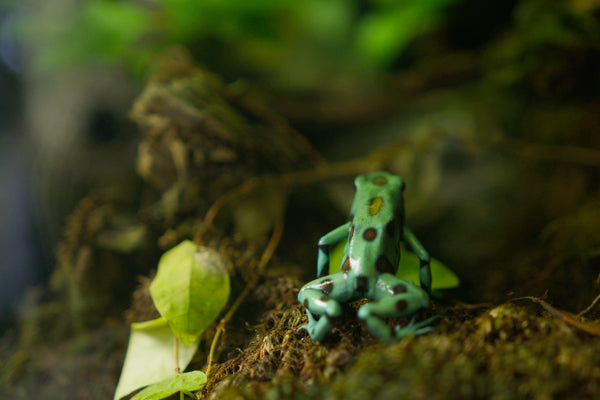If you are even the slightest bit squeamish about spiders, likely the first image that pops in your head is a big, hairy tarantula stealthily crawling up someone’s back. We’re here to tell you we understand; the pull of pop culture has created so many mistaken narratives that it’s no surprise that our furry arachnid friends have fallen victim. But fear not (literally): we will dispel the myths you may harbour about tarantulas and, while you may not welcome one into your home as a pet, you might just decide your fear is entirely unjustified.
Here are some facts about the top 5 most common tarantula families.

Brachypelma
If you’ve seen movies like the Indiana Jones series or The Mummy, the scenes with tarantulas crawling over the hero will tend to be using spiders from the brachypelma family, because they are the most docile. In fact, it is almost unheard of for a brachypelma to bite a human, though they are quick to kick their urticating hairs in self-defense. The bodies on these spiders will grow to about 6cm wide, with their legs about the same length and the males will live to about 8 years, with the females lasting up to 25 years! The brachypelma is generally brightly coloured, but turns cryptic when in their native habitat. All the better for hunting their prey and killing with their venom, which– don’t worry!– is not of a medically substantial level for humans. Their preference is for a dry environment with plenty of substrate to dig around in.

Avicularia (Pink Toe)
This genus has very distinctive pink toe pads, hence the common name. Found in Central and South America, they have a lifespan of 4-5 years in males and 6-9 years for females (common theme in tarantulas!). Like many New World tarantulas, the Pink Toe have urticating hairs they use as a defense mechanism. They are among the most commonly adopted tarantulas as pets, due to their stunning colours and non-medically significant venom. Fun fact: juvenile Pink Toes can jump up to 4 centimeters! They prefer a taller enclosure and do not require heat or humidity to thrive.

Aphonopelma
These tarantulas are found in the southern American states, and can range as far south as Central America. They’re big ones too, with a leg span of 6 inches or more! While they also have urticating hairs and look scary, aphonopelma are not harmful to humans and some of the 90 species identified so far have become very popular in the pet community. Another in the Girl Power! Family, the males live 4-10 years, while the females are known to live up to 30 years! Due to their size, a 10 gallon tank is ideal.

Grammostola
This family of tarantulas is native to South America and can grow to 8 inches long! They are usually brown in colour with pink to orange coloured hairs, giving them a distinct appearance. They are a very docile spider with very mild venom, which make them a good pet for tarantula beginners. Continuing the theme of female longevity, the better half of these spiders can live upwards of 25 years; there are stories in the tarantula community of grammostola adults caught in the wild in the 1990s that are still alive! The enclosure for a grammostola needs to be dry, with a dry substrate, as moisture will cause your pet to try and climb the walls, risking a fall and injury.

Chromatopelma Cyaneopubescens (aka Greenbottle Blue or GBB)
Don’t worry, no one can pronounce the proper name, hence Greenbottle Blue! These tarantulas are native to the Paraguaná Peninsula in Venezuela and with such an exotic, limited natural habitat, you know they’re going to be beautiful. And guess what, they are! Juveniles start with pink/ orange legs and a dark body which changes to a striking blue/ green colour with a bright orange abdomen. Particularly striking for hobbyists are their metallic blue legs, and their heavy webbing make for wonderful displays in their enclosures.
Many people shiver at the thought of a tarantula residing in their house, but hopefully we have been able to dispel some of the fear and myths surrounding them. Within the top 5 families of tarantula, there is no reason to be fearful of bites or venom and they are very docile. As hobbyists, all 5 families make for wonderful displays, enhancing your house with very unique, living art!
Visit Pisces Pet Emporium to discover the range of tarantulas we carry at any time and– as with any pet or general question– feel free to ask our experts any questions to help find out if owning a tarantula is right for you!




